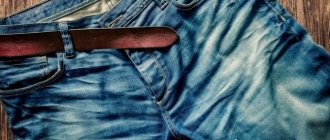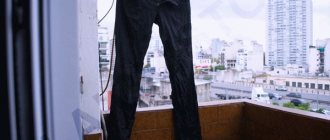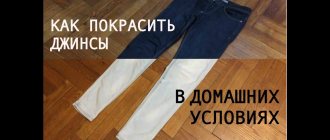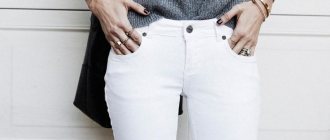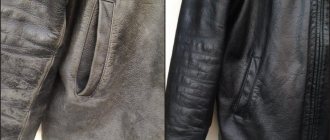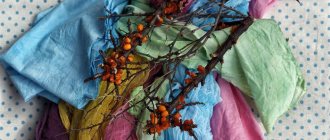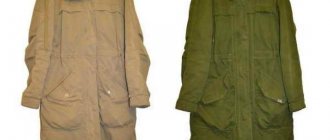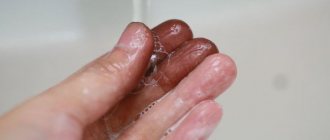Methods with special paint
Powdered fabric dyes are sold in craft stores and hardware stores.
You can use the paint at home either in the washing machine or in a basin. The first method is the most convenient, but risky, since the device itself may become stained, and it will be dangerous to wash other things, since they may take on a bluish tint. Painting in a basin is not the most convenient, but it is safe. By the way, not only jeans, but also denim jackets, shorts, etc. are updated with special textile paints.
The first method is in the washing machine:
- The powder paint comes with instructions, according to which you need to dilute the substance in a certain amount of water and filter it. Sometimes manufacturers recommend adding soda or salt to improve the result - these methods work, so do not neglect them.
- Jeans are turned inside out. They must be clean, without grease stains.
- The pants are placed in a drum, followed by a dye solution.
- Mode - for cotton fabrics, temperature - at least 90 degrees, duration - the longer the better.
- While the jeans are spinning in the drum, a rinsing solution is prepared in a basin: for 1 liter of water - 1 tbsp. l. food vinegar.
- After finishing washing, the jeans are transferred to the rinsing solution and left in it for 30 minutes. This will help set the color.
- Now you will need a washing machine again. Jeans are washed with powder on a short program in cool water, no warmer than 40 degrees.
- The painted product should be dried away from light and heat sources.
The second method is to use an enamel basin:
A pack of dye is diluted in a liter of hot water, stirred so that the lumps dissolve, and passed through two layers of gauze. If necessary, add soda or salt. 5-7 liters of clean water are poured into an enamel basin, followed by a dye solution. Jeans are immersed in a basin and put on fire
The pants need to be boiled at high temperature - about 90-95 degrees - for about 50-60 minutes, stirring occasionally. While the jeans are being dyed, prepare a bowl of warm water for rinsing. After an hour, the jeans are carefully removed from the basin - proceed carefully and under no circumstances remove them with your bare hands! - and move it into a basin with clean warm water. After the first rinse, a second rinse is carried out, this time in cold water. It doesn't hurt to add a little vinegar to the last rinse water. Finally, the jeans are washed with powder, preferably by hand.
Steps
Part 1 of 3:
Preparing jeans for dyeing
- 1
Wash your jeans.
To ensure that there are no substances left on the jeans that you are going to dye that could interfere with the dyeing process, they must be washed first. Place them in the washing machine and wash as usual, following the care instructions on the jeans' sewn-in label. X Source of information
- There is no need to dry your jeans after washing. They must be wet before bleaching or dyeing.
If you have blue or light-colored jeans that you don't intend to bleach, the only thing you need to do before dying is to wash them. In this case, you can skip the rest of the steps in this part of the article.
Part 2 of 3:
Preparing the Paint
- Part 3 of 3:
Dyeing jeans
1
Press out any wrinkles on your jeans.
Jeans should be wet after washing. Before putting the jeans into the pan, squeeze them out again to make sure there is no excess moisture left in them. Then straighten the jeans so that when you dip them into the dye, there are as many wrinkles as possible. X Source of information
- 2
Place the jeans in the pan and stir them in the solution for a while.
Dip the straightened jeans into the paint pot. Using a large, long spoon, stir them for 30 minutes or until they are as black as you want them. X Source of information
- As you stir the jeans, move them back and forth, up and down. It is necessary to ensure that the dye evenly saturates the denim fabric.
Be careful not to twist or wrinkle the jeans due to stirring. This may result in uneven coloring.
- 3
Remove jeans from pan and rinse thoroughly until clean.
When you are happy with the results of dyeing your jeans black, remove the pan from the stove and transfer the jeans to the sink. Rinse them in the sink with warm water. Gradually start making the water colder until all the excess paint is washed away and the water runs completely clear. X Source of information
Some dyes may come with a dye fixative for cotton fabrics to prevent fading. It can be used to treat jeans immediately after dyeing in accordance with the manufacturer's instructions provided.
- 4
Hand wash your jeans.
After dyeing your jeans, hand wash them directly in the sink. Use warm water and liquid detergent for hand washing. Then rinse your jeans with cool water. X Source of information
If you want, you can wash your jeans in the washing machine along with an old towel. The towel will absorb any excess paint that comes off the jeans.
- The first few times you machine wash and dry your jeans, be sure to add an old towel or other dark item to them in case the dye continues to wash out. To prevent paint from fading, use cold or warm water and a gentle liquid detergent.
- It is obvious that textile paint leaves behind stains on fabric surfaces. For work, wear old clothes that you don’t mind getting dirty during the process of dyeing jeans, and also protect your hands with rubber gloves. Clear your workspace of textile items, including towels, rugs and curtains.
- Be careful when wearing freshly dyed jeans. They can leave marks on light-colored upholstered furniture, even after the paint has set. Be sure to rinse them thoroughly after dyeing.
- Even after several dyeing procedures, the jeans will not become as deep black as store-bought black jeans. Be realistic in your expectations.
- Washing machine
- Machine washable detergent
- Large stainless steel saucepan
- Big long spoon
- Water
- Latex gloves
- Bleaching agent
- Jeans
- Disposable polyethylene tablecloths
- Liquid or powder black paint for textiles
- Salt
- A piece of cloth or paper to test the dye
- Liquid detergent for hand washing
powder, white, blue and starch
Are you interested in detergents and how to return things to their white color? We will now teach you how to bleach white things, what folk remedies are available for this, and how to restore their original color.
Unfortunately, our favorite whites tend to take on shades of yellow and gray. Favorite T-shirts, dresses, skirts lose their original whiteness and look worn and faded. But this problem can be dealt with. There are some simple tips and folk methods that will help you return your items to their original white color and bleach them effortlessly. And since white things can be bleached using methods known to us.
Bleach powder and whiteness
Dissolve bleach powder or bleach in water, at the rate of 20 grams per 10 liters of water. Place the laundry in water and boil.
Different types of fabric require different water temperatures. If you are bleaching artificial fabrics on things, then you can heat the water to maximum 50 degrees, cook for 20 minutes and then rinse. Cotton and linen items should be bleached at a higher temperature, but not brought to a boil.
Bleaching and disinfectants for whitening clothes are suitable for almost all fabrics. Bleach can be used both while soaking and after washing.
- Wet the laundry, soap it and put it in water with a Clorox solution – 1 tbsp. spoon per liter of water. After 4 hours, wash the laundry with soap and rinse.
- You can also use hydrogen peroxide or hydroperite. You will need 3 tbsp for a basin of water. peroxide or 9 tablets of hydroperite. Soak the laundry in the solution for 30 minutes and then rinse.
- Another method is potassium permanganate. Add a little potassium permanganate and about 180 grams of washing powder to a bowl of hot water, put already washed clothes in the water and cover with plastic. After the water has cooled, the items can be taken out and rinsed thoroughly.
After bleaching clothes, it is better to rinse clothes twice. First in warm water, then in cold water. If you are not satisfied with the result obtained, you can repeat the procedure.
Blue for washing
In the old days and to this day, many women use blue. Blue emphasizes whiteness. It can be in the form of a powder or liquid consistency. If the blue is in powder, then it is better to put it in a bag made of several layers of gauze and lower it into warm water. Wait until the water turns colored and then remove the bag. Stir the solution and dip old, captivating laundry into it.
Starch for bleaching
There is also one popular folk way to give your linen a new look. Dissolve half a cup of starch in 3 glasses of cold water. Then gradually pour the diluted starch into 3 liters. boiling water. And rinse your laundry there. It is better to iron starched linen while damp. Also, now all stores sell powder – Starch – a product for starching collars and cuffs. You will need 2 tbsp. spoons per 1 liter of water. Wait until the water boils and only then rinse your clothes in the solution.
And a couple more useful tips to ensure that your things always remain white. Do not wash white items with colored items. Wash linen and cotton items separately from wool and synthetic items.
What to use?
This is one of the frequently asked questions. There are several options:
- Naturally, more expensive products in powder form are guaranteed to be more effective and the results will last much longer. They are available both in specialized stores and on the Internet, where purchasing them can be cheaper.
- There are often reviews about the use of hair dye. The method saves when there is nothing more effective at hand. True, different manufacturers produce several shades of the same color. The black palette is also quite large. Therefore, the result may be very surprising.
- No less popular are the well-known textile paints. They are much cheaper and require enough time and effort to achieve a good result.
Selection of paint for jeans
Again and again we will repeat the golden rule about reading instructions. There are so many dyes sold that it would be pointless to describe each variety in detail - no one will ever remember it. A single misstep can transform your modest everyday jeans into a stage costume, or from college party king to an overgrown Ohio high school senior.
In order to somehow protect you from such unplanned transformations, let’s go over the basic principles of selection and types of paints to dye jeans blue at home.
Soluble or insoluble?
Simply put, powder or solution? If you are a lazy and undemanding person, the choice in favor of a ready-made liquid reagent is quite obvious for you. But it's not that simple. Coloring and coloring are different. Some people want to change the color of their jeans, others just want to freshen them up.
Manufacturers have learned to take this point into account and began to produce dyes intended for different purposes. It is generally accepted that:
- liquid dyes for jeans are better for modest plans to restore the color at least a few washes back;
- To completely change the color or add new shades to the color scheme of the pants, it is better to choose a powder dye composition for jeans.
Aniline dyes
At first glance, the simple procedure for dyeing fabrics, as you have seen, is full of many subtle nuances in which it is easy to get confused. How not to make a mistake with the shade, with the type of dye for jeans, with the method of heat treatment?
Help in choosing a shade are color tables, which are sometimes supplied with instructions for dyes. In them you can see how rich shades can be obtained at different concentrations of the active substance. But these are shades.
What about chemical formulas?
If you are not sure that you remember the school chemistry curriculum well, focus on aniline dyes. Aniline dye for jeans is not without reason considered the most popular and reliable.
The principle of action for dyeing jeans blue at home with aniline products is generally the same: boil and soak in a vinegar solution. There are just a few minor details:
- table salt, which in other cases is added at the discretion of the owner, or in accordance with the instructions, is mandatory for aniline dyeing, otherwise the color will quickly disappear;
- difficulties may arise with the dishes in which your jeans will be dyed: when cooking, you need to straighten them as much as possible, therefore, your dishes must be wide enough, and you will not be able to boil the bath;
- You can play it safe by using a large wooden spoon or stick, stirring the solution itself.
Dillon
If aniline dyes for jeans are an enduring classic of the genre, then the universal product for tinting and washing denim “Dilon” is a newcomer that is confidently gaining popularity. The reason is clear: a product that is equally suitable for dyeing and washing, firstly, saves money and nerves, and secondly, it is much easier to use in practice.
Try it, use it and have fun. And remember the golden rule: if after dyeing the result is not at all what you expected, just tell yourself and your loved ones that everything was as planned and you wanted to dye your jeans at home exactly that blue color.
But we don’t say goodbye to you here, come back again!
Subscribe to updates on our Facebook page and be sure to share with your friends! See you soon!
With love, Stay tuned!
Where to begin?
Technical progress, having put at our disposal a rich palette of synthetic dyes, makes it possible for every modern housewife to dye jeans blue at home. You can simply return your wardrobe to its former brightness of color, or you can go for a bold experiment, feel like a designer, going against the dull gray-blue-black palette of city everyday life. It's up to you.
In the old days, fabric dyeing was a venerable urban craft. The Street of Dyers in Avignon or the Choir dyehouses in Moroccan Fez, famous since the 11th century, are generally recognized world attractions.
The first two questions about which you need to decide in advance in order to properly dye jeans at home:
- Color and dye.
- Dyeing by washing machine or by hand.
Let's start with the second question, since in general the dyeing procedure in both cases is quite simple and standard, but choosing the right and high-quality dye for jeans is a delicate skill, sometimes acquired with experience.
Important! For improvisations with color spots and uneven shades, hand coloring is perhaps better suited.
Dyeing with regular fabric dye
At the very beginning, you should determine what type of fabric will be processed. If it is not possible to read the information about this on the label, you need to set fire to a miniature piece cut off from the stock. The smell of burnt paper or burnt hair will indicate that the fabric is natural. When burned, synthetic fibers do not leave an odor or have a specific smell.
The easiest way to change or refresh the color of cotton, wool and other natural materials. Due to their structure, they are easily saturated with the coloring composition, and it is fixed quite firmly. How can you dye the fabric black in this case? Aniline dyes are used for these purposes.
The sachet of the substance is diluted with water according to the instructions. The solution with the fabric immersed in it is brought to a boil. Then you need to add water-salt solution to the main solution (calculation - tablespoon of salt per liter) and continue moderate boiling for at least 40 minutes. To ensure that the paint is absorbed better, do not remove the fabric until the solution has cooled. And the final step will be a thorough rinsing.
Common Mistakes
The most common mistake is using the wrong dye. The composition must be selected taking into account the type of fabric being processed. It is not recommended to dye corduroy trousers. This fabric does not hold color. The second common mistake is that when dyeing they try to get a different color. This approach will not bring the desired result. As mentioned above, when painting in other colors, halftones are obtained.
Before dyeing, it is recommended to degrease the fabric. Third-party particles do not allow the prepared mixture to penetrate deeply into the material, as a result of which light spots will appear on individual parts of the trousers.
How to dye jeans at home
Each of us has favorite things that we hate to part with. Even if jeans, a T-shirt or a sweatshirt have already lost their original color or are stained, they still remain in our closet. But such things do not necessarily have to be thrown away or sent to the dacha. They can still be revived. For example, denim clothes can be dyed, a fabric applique can be sewn onto a T-shirt, a sweater or sweatshirt can be decorated with leather inserts. There are a huge number of options here, and the choice is limited only by your imagination. Today I will talk about how to dye jeans yourself. These recommendations will be useful not only for updating old things, but also for turning ordinary models into super fashionable ones.
How to dye jeans blue
If things have lost their color, having faded after repeated washings, quite affordable household dye will allow you to restore the original rich shade. Blue is sold at any hardware store. Different manufacturers make it either in powder or liquid form. How to dye jeans using blue? There is no special technology. Everything is as simple as two and two.
In this case, there is no need to boil the fabric. It is enough to completely immerse the jeans in water at a temperature of thirty degrees and leave for a couple of hours. To make the color last longer, add a couple of tablespoons of table salt, and then rinse thoroughly in a weak vinegar solution. Please note that blue is not the most suitable dye, and the item will certainly fade. In addition, after several washes it will wash off and the procedure will have to be repeated.
Special means
If you want to achieve a more permanent color, use fabric paints. Dylon products have proven themselves well. Aniline dyes also behave well when worn. To dye the item, you need to boil it in an aqueous solution with salt. When rinsing, use the same table vinegar.
Use a wide bowl that can fit the item completely so that the fabric is dyed evenly. An aluminum basin or laundry tub is best suited for this purpose. While boiling, the solution must be stirred periodically to prevent streaks from forming on the fabric.
The required proportions are indicated on the dye packaging. Try to maintain the required dosage, otherwise it will be very difficult to remove the excess.
Do not forget that the dye settles on the walls of the dishes. Therefore, at the end of the process, it must be thoroughly washed with a hard sponge with trisodium phosphate.
Today you can buy fabric dyes not only in hardware supermarkets, but also in shops that sell creative materials.
How to dye jeans using potassium permanganate
Many of you are familiar with the word “varenka”. The peak of popularity of this denim occurred in the mid-eighties. But today, fashion designers are once again bringing jackets, blousons, shirts, skirts and trousers with this original design back to the catwalk. Do you want to have the same fashionable outfit? Then the advice on how to dye jeans with potassium permanganate will be useful to you.
In this case, there is no need to boil the thing. A mixture of potassium permanganate (100 g) and table vinegar with a strength of 9% (150 ml), reacting with hydrogen peroxide, brightens the fabric.
First, the jeans are treated with the first composition. Then the hydroperite tablets are crushed into powder, water is added and the design is fixed with a fresh solution using a sponge.
Now a little about how best to apply the drawing. Nowadays it is fashionable to combine strong abrasion with light (actually white) small specks. You can get these using a stiff brush and a metal mesh. The technology is very simple. First, dip the brush in the composition, then spray it onto the fabric through the mesh.
Varenka jeans - the traditional way
This technology has been known in Russia since the birth of the cooperative movement. It should be noted that this secret was known not only to novice businessmen. Any self-respecting fashionista knew how to dye jeans at home.
For this purpose, use the usual “Whiteness” in the amount of one glass per bucket of water. First, the jeans need to be thoroughly twisted and secured with elastic bands. Then they are completely immersed in a bucket of hot water and boiled for about fifteen minutes. At the same time, you need to make sure that the jeans do not float up.
The pattern turns out to be quite large. If you want to get a pattern in the form of radiating circles, use the same technique as in batik. The bleaching composition is poured into already hot water. Unfortunately, this method has a huge disadvantage - the pungent smell of bleach.
Useful tips
If you are going to paint any item of your wardrobe for the first time, then consider the following nuances:
- Only natural cotton, wool or linen are dyed evenly. When dyeing other fabrics, there is a possibility that the clothes will be dyed in pieces.
Important! If you are not sure about the composition of the fabric and do not want to take risks, try test dyeing - dye a small piece of fabric specifically from your product.
- You only need to paint a thoroughly washed product without stains, otherwise the paint will lie unevenly.
- Clothes are placed in the machine wet - this way they are better dyed.
- If you want to dye an item a darker color to hide a stain, it will still be visible because stained clothing is not dyed evenly.
Important! Rust stains are practically impossible to paint; it is easier to decorate them in some other way, for example, by sewing on an applique.
- It is unlikely that you can get a black one from a white item right away. You will most likely have to do several paint jobs before you get the shade you want.
- A freshly dyed item will fade, so it is not recommended to wash it with other items for up to five washes.
- It is not recommended to paint synthetics, since they do not stain evenly, no matter what paint manufacturers write. But if you really want to experiment, then do a test dyeing on a piece of material, and only if the result is positive, paint the entire thing.
- The color indicated on the package is obtained if you dye a white item. But if your product is a different shade, then at the end you risk getting a completely unexpected color, albeit in a similar color scheme.
- As a rule, the threads with which the product is sewn are not dyed, so think in advance about how they will be combined with the new color of the clothing.
- If you add conditioner while painting, the paint will not apply evenly and your clothes will become stained.
- Jeans are dyed on both sides.
Important! If you are going to update the design of your item in this way, be very careful about choosing the right product. Find out all about the best fabric paints.
How to dye jeans blue: manually and in the washing machine, how long to keep
Some housewives doubt whether it is possible to dye jeans blue. “Grandma’s” trick has been known for a long time: if a thing in blue shades has lost its former brightness, then with the help of blue it can be renewed. It is not difficult to dye chintz, satin, or linen fabric. But it’s worth understanding whether this advice applies to denim.
Is it possible to dye jeans blue?
Water-soluble and water-insoluble dyes can be used as a blue for dyeing jeans. These can be liquid or powder.
It could be:
- Prussian blue;
- indigo carmine;
- Paris blue;
- ultramarine;
- anilic dyes.
All these types of dyes can be used when dyeing jeans, you just need to take into account some of the characteristics of the dyes. For example, Prussian blue can only dissolve in water together with oxalic acid.
Anil dyes become discolored in the sun, some of them acquire a reddish color when ironed. Ultramarine is quite cheap, but it does not dissolve. Insoluble paints stain fabric worse and are more difficult to work with.
There may be difficulties due to uneven dyeing, especially on heavy items: insoluble crystals can stain clothing in the form of stains.
It should be taken into account that if there is embroidery on jeans, it will inevitably deteriorate and turn blue. The item will look washed out and untidy, and bright embroidery threads will have a dirty effect.
Denim items in shades other than blue cannot be dyed blue. Blue and light blue shades that need to be refreshed or re-tinted can be used. It is acceptable to dye white and light gray jeans, which will turn blue when used with bluing. The final shade will in any case depend on the original color.
How to prepare jeans for blue dyeing
The first and most important tip is that jeans must be absolutely clean before painting. If there are any even minor stains on them, they will not only not be painted over, but will also stand out even more.
If it happens that there are stains that cannot be removed, you should choose a paint two shades darker. Paint matched to the tone of the jeans will not cover the stain. Washed jeans should be dry.
There is no need to iron them, just keeping them clean is enough.
How long to keep jeans blue?
In order for the color to refresh, the jeans are kept in blue for at least two hours. If you want to achieve a more lasting result, add additional time, up to 12 hours. If you need to blue a light spot on jeans, then choose a shade a shade or two darker than the original. If you choose a matching shade, the stain will be noticeable.
Important! You can make extravagant uneven dyeing by folding the jeans into a roll and tying them tightly with braid - this method of dyeing is quite acceptable for dyeing old favorite jeans, for example, for a trip to the country
How to dye jeans blue at home
You can properly blue your jeans either manually or in a washing machine. Dyeing by hand is a little more laborious, but soaking for many hours provides a more permanent result.
Painting in a washing machine guarantees more uniform coloring, since the constant movement of the drum prevents the paint from settling on one particular area.
By constantly mixing water and paint, the item is painted to a higher quality than by hand.
How to dye jeans by hand
Blue is diluted in cold water and poured into warm water
It is very important to do everything as required by the instructions, since substances are partially colored during the washing process, and partially during rinsing. You need to calculate 0.5 g of dye per kilogram of dry denim
After the paint has been prepared, the jeans are carefully straightened and dipped into the blue solution.
It is better to take bulky dishes for this, for example, a wide basin or a small bath, since the fabric should be spread out in one layer.
After some time, the product is removed. Here we must immediately make a reservation. If you are generally satisfied with the original color and just need to refresh it a little, 2 hours of soaking in blue will be quite enough. If the shade of the jeans is dull and you need full coloring, it will take 12 hours. During this time, the rough fabric will have time to soak properly, the result will be durable and rich.
Next, the denim item is rinsed in two or three waters. Be sure to add 5-7 tablespoons of food vinegar so that the shade is firmly established. Table salt added in the same amount to 10 liters of water has a similar effect.
Features of denim dyeing
The most common jeans in stores are all shades of blue, light blue and gray. Grays and blacks fade the most over time. Dark blue colors are long lasting.
Preparing tissue for the procedure
To ensure that the paint goes on as evenly as possible, you need to prepare the denim for dyeing:
- Wash the product thoroughly. Set the water temperature to 40°C - this is the optimal value for denim. Wash as usual - with powder and conditioner. After washing, do not dry the jeans - dyeing is done on damp fabric. For light blue and light blue jeans, this step is sufficient. Further actions are carried out on products of bright or dark colors: red, burgundy, purple, dark blue and the like.
- Fill a large saucepan with water. The size of the pan should be large enough to wash jeans in it. Add bleach to water. Ordinary chlorine may also work, but it is better to use more gentle products, for example, Belize. It is added to water in a ratio of 1:10. Washing should be done in a well-ventilated area, as chlorine vapors are hazardous to health.
- Place a saucepan of water over high heat.
- When the water is ready to boil, reduce the heat to low and place the jeans in the pan. While stirring the product with a long wooden spoon or spatula, soak it in hot water until it lightens by 2-3 shades. Some jeans may change color to beige or yellowish - this is normal. Discoloration will take 30 to 60 minutes.
- Turn off the heat and drain the bleach solution from the pan. Rinse your jeans thoroughly.
- Wash the jeans again in the washing machine using detergent. This will remove any remaining bleach that could interfere with the paint job or damage the fabric. Do not dry the product before painting.
Precautionary measures
As with any other dyeing, bluing also requires precautions.
- All painting manipulations should be carried out only with rubber gloves.
- When working with blue and vinegar, you must protect your eyes and mucous membranes. Acrid fumes can cause irritation. Therefore, it is appropriate to wear a medical mask.
- After dyeing an item using bluing, avoid washing this item with other clothes in the future due to the likelihood of shedding.
- All painting work should be carried out in a well-ventilated room.
Special dyes for fabrics
The most common universal dyes are:
- “Surf” is suitable for natural and artificial fabrics, 10 colors are available, including white, black and gray. For 0.5 kg of clothes you will need 1 packet of paint.
- Simplicol is a paint with a fixative, suitable for cotton and semi-synthetics without the addition of polyurethane. Can be used in the washing machine.
- Fashion Color is suitable for different types of fabric. The packaging is enough for 1.5 kg of clothes. Painting can be done in a washing machine.
Painting in an enamel tank or bucket:
- A liter of hot water is poured into a bowl. Add dye and, if necessary, other substances - salt or soda. All ingredients are stirred.
- Add another 5-7 liters of water and put the things that need to be painted there.
- The container with things and dye is placed on a gas stove, where it is periodically heated to 95 degrees for about an hour.
- Then the clothes are removed from the solution, allowed to cool slightly and rinsed first in warm water and then in ice water.
- After this, the dyed jacket or trousers are immersed in a vinegar solution (a tablespoon of 9% vinegar mixed with a liter of water) for 20 minutes and then washed by hand with washing powder.
Painting in a washing machine is less labor intensive. It goes according to the following scenario:
- The dye is diluted in 0.5 l. water, stir until a homogeneous mass is formed and pour into the drum of the washing machine. Add salt/soda if necessary.
- Throw things into the drum to be dyed, set the washing mode to “Cotton”, temperature 95 degrees, washing time – standard.
- At the end of washing, the laundry is transferred to a basin with a vinegar solution (prepared in the same way as for hand dyeing). After 15 minutes, the items are put back into the washing machine and washed with powder on an accelerated cycle at a temperature of 40 degrees.
Why is color lost?
The main reason is considered to be frequent washing.
Water and washing powder make the fabric of the product lighter and lighter, washing out the paint. To preserve the color of things at home, it is necessary to use special detergents for black clothes when washing. This helps keep the jeans in their original condition for a while. When purchasing, you should rub your jeans with a cotton pad. If the quality is poor, there will be paint stains.
Shedding is another reason. Some things sometimes stain the water they are in. Although the phenomenon does not mean that the jeans are defective. Natural dyes can also fade. When clothes are first washed, coloring pigments are released. They may also remain on the skin or tissue in contact. In addition, if jeans are worn constantly, including to work, walking, or relaxing, they will lose their original appearance. Also, prolonged exposure to sunlight leads to color fading.
Therefore, it is important to monitor the condition of your clothes so that they last longer.
Methods for dyeing jeans
Dyeing of jeans can be done using different technologies, the choice of which depends on the type of dye, type of fabric and the wishes of the owner.
"Varenki"
You can give your jeans a washed-out effect by using chlorine-based bleach.
The pants will have picturesque snow-white streaks and attract the attention of others
The process of creating dumplings is as follows:
- pour 250-300 ml of bleach into a metal bucket of water;
- Twist clean jeans several times and tie them tightly with rope;
- folded, immerse the product in the composition;
- put the container on the stove and boil for 20 minutes;
- Rinse the item in cool water and dry as usual.
In the washing machine
A washing machine can make the dyeing process easier. However, it is possible that she herself may get dirty with the dye.
How to dye your jeans:
- wash the product thoroughly and dry it;
- prepare the coloring composition, if it requires dilution in water - get rid of all lumps by straining it through a cloth;
- put the jeans in the car, pour out the composition;
- select the required mode (for at least 2 hours, with a maximum temperature that the jeans fabric will allow);
- after washing, place the item in a bowl with slightly salted water for 30 minutes;
- run another washing mode to remove dye;
- After painting, inspect the drum of the machine; if there are traces of paint on the door rubber, wash it with laundry soap.
In enamel dishes
The manual dyeing process involves the use of an enamel bowl.
It goes like this:
- dilute the coloring matter in a separate container, strain it;
- stir the paint in a basin with 7-8 liters of water;
- heat a bowl on the stove;
- put jeans in hot liquid;
- boil the product for an hour;
- rinse the item in hot and cold water;
- fix the color by rinsing in a vinegar solution;
- wash jeans with a mild detergent.
